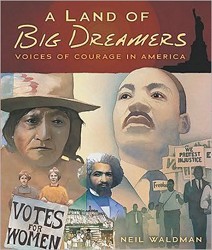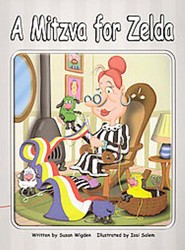Read Anna Olswanger’s Article on The ProsenPeople
An agent and author reflects on why she wrote her newest bookDiscussion Guide
Juvenile Fiction/Historical/Holocaust48 pages
Reading Level: Grades 5 – 8
Synopsis
Daniel, a young Holocaust survivor, arrives at a New York yeshiva in 1946 to study and live. He is carrying a small box, his only possession. Daniel rarely talks, but the story’s narrator, a stutterer taunted by the other boys, comes to consider Daniel his friend.
What’s in the box is a mystery. Daniel never lets it out of his sight, but he won’t talk about it, either. The boys at the yeshiva are impatient with his secret. Only Aaron, the stutterer, reaches out to Daniel, and through their friendship, Daniel is able to let go of his box. Together, each boy finds his “voice.”
Based on a true story, Greenhorn gives human dimension to the Holocaust. It poignantly underscores our flawed humanity and speaks to the healing value of friendship.
Themes: Belonging, Self-Discovery, Family, Friendship, Disabilities.
Discussion Questions1. What is the meaning of the word “Greenhorn?” What is the history of this word and when was it commonly used? Why do you think the author chose Greenhorn as the title? Was it a good choice?
2. Was the book believable to you? Did it shock or disturb you?
3. Greenhorn is a book about language and its social role. Aaron struggles to speak — he stutters in expressing himself. Daniel, the newcomer to the group, doesn’t speak. How does language help to bridge their different worlds and experiences?
4. How did the stuttering Aaron finally find his voice? How did Daniel find his?
5. No one knew that Daniel could speak English. Do you think that he just learned it? Why did he resist speaking in English? And why did he finally use English?
6. At first, most of the boys were friendly to Daniel, but when Hershel held him down and took away his box, why didn’t they do anything to help Daniel? What might they have done? What does Judaism say about “welcoming the stranger?”
7. Why do you think Aaron was kinder than the other boys to Daniel?
8. When Aaron heard the box fall on the floor from under Daniel’s pillow, why did he get out of bed and slip it back? What did Aaron whisper to Daniel? Why did Aaron confess his dream to the sleeping Daniel? And why, if Daniel heard Aaron, did he not answer or acknowledge him?
9. Why was Aaron afraid to share his dream with the other boys? How might they have responded?
10. Why did Rabbi Ehrlich want to bury what was inside Daniel’s box? Can we be certain that the box actually contained what Daniel and the rabbi believed it did? If they were mistaken, why would the box and its contents still be important to Daniel? Why did he want to keep the box with him at all times?
11. What did Daniel say to Aaron at the end of the book? Why did he wait to say it?
12. Why do you think Daniel finally agreed to live with Aaron and his family?
13. Would you recommend this book to someone else?
Research Questions1. What was happening in Europe during the time of the book? How much did the boys know about the restrictions on Jews, Kristallnacht, slave labor camps, and death camps? Why do you think they didn’t know about everything that had happened to the European Jews?
2. What was the game of stickball? How was it played? Why do you think the boys at the yeshiva played stickball, rather than baseball?
3. Where did the Yiddish language come from? Why did so many Jews in America speak it? Why would Aaron have spoken it? Why did he presume that Daniel knew Yiddish?
4. What was the Quiz Kids Show? What role did the radio play in the lives of Americans in the early and middle twentieth century? What other radio shows might the boys in the yeshiva have listened to?
5. What did sixth-grade boys learn in a yeshiva in the 1940s? What is the Gemara? How did the boys “learn” Gemara?
6. Moishe Oysher was a famous Yiddish movie star. Do you know of other Yiddish movie stars? Why would Yiddish movies and movie stars have been popular with the boys in the yeshiva and their parents?
Web ResourcesChildren of the Holocaust http://www.adl.org/children_holocaust/children_main1.asp
Daring to Resist http://www.pbs.org/daringtoresist/synopsis.htm
Holocaust Memorial & Tolerance Center of Nassau County https://www.holocaust-nassau.org/index.php
Museum of Tolerance Online http://www.museumoftolerance.com/site/c.tmL6KfNVLtH/b.4865925/k.CAD7/HomeMOT.htm
The Holocaust Explained http://www.theholocaustexplained.org/
United States Holocaust Memorial Museum http://www.ushmm.org/
This Greenhorn Discussion Guide created by Ann Malaspina www.annmalaspina.com
Discussion questions prepared by Marcia Weiss Posner, Ph.D., librarian and program director at Holocaust Memorial and Tolerance Center of Nassau County, New York https://www.holocaust-nassau.org/index.php



